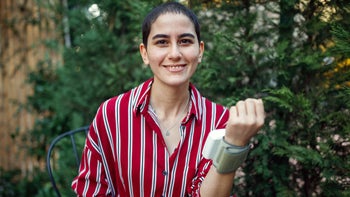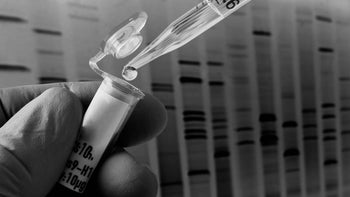
Gene and Cell Therapy: What’s the Difference?
Key takeaways:
Gene and cell therapy are sometimes thought to be interchangeable terms. But they’re each unique areas of medicine.
Cell therapy products place new cells into your body to treat certain health conditions. Examples include Laviv (azficel-T), Provenge (sipuleucel-T), and HPC cord blood.
Gene therapy medications alter a specific part of your genetic makeup to help treat genetic or inherited diseases. Kymriah (tisagenlecleucel), Zolgensma (onasemnogene abeparvovec-xioi), and Zynteglo (betibeglogene autotemcel) are three popular examples.
Table of contents

Depending on your health background, or even if you’re just curious about the latest trends in pharmacy and medicine, you may have heard of cell therapy or gene therapy. At first glance, these terms may seem pretty similar. But they’re both unique and rapidly growing areas of medicine that have the potential to change the lives of many people.
In its simplest form, cell therapy involves placing cells into your body to treat a health condition. Gene therapy aims to treat an illness through genetic modifications. But they each have many layers, and several treatment options fall into each category.
With so many complexities, understanding the relationship between these therapies can get confusing. Here, we’ll talk about gene and cell therapy — what they are, how they work, and how they compare.
What is cell therapy?
Cell therapy — also known as cellular therapy — can be used for a number of reasons. If a part of your body is damaged, depleted, or missing, cells can be injected or placed into your body as a type of treatment.
Some cell therapies are used for cosmetic reasons, such as correcting wrinkles. Others can help promote tissue growth in areas like your mouth or knees. Others can be used to treat more life-threatening health conditions, such as certain types of cancer.
FDA-approved cell therapies
Because they’re used in several situations, many cell therapies are available. Examples of FDA-approved cell therapy products are summarized below.
Cell therapy treatment | Use |
Gintuit (allogeneic cultured keratinocytes and fibroblasts) | Gintuit is a product that’s created using cells from other people. It looks like a small flat sheet, and it can be placed in your mouth to help promote gum and tissue growth. |
Hematopoietic progenitor cell (HPC) cord blood | Also known as a type of stem cell transplant, HPC cord blood can be administered if you have a health condition that’s affecting your blood. HPC cord blood comes from other people — it’s an infusion of stem cells that can turn into more specific blood cells that your body needs. There are many different HPC cord products available, such as Allocord, Clevecord, Ducord, and others. |
Laviv (azficel-T) | Laviv is a product that’s made using your own cells. It’s injected into your skin to help treat moderate to severe cosmetic wrinkles near your mouth and nose. |
Provenge (sipuleucel-T) | Provenge is a cellular immunotherapy medication that can treat advanced prostate cancer. It’s made using your own cells, and it’s given as an infusion into your vein. |
MACI (autologous cultured chondrocytes) | MACI is a product that’s created using your own cells. It also looks like a small flat sheet, but it’s placed inside your knee to help with cartilage growth. |
Rethymic (allogeneic processed thymus tissue–agdc) | Rethymic is a product that comes from the cells of other people. It can be surgically implanted in kids that were born without a thymus, which is an organ in your chest that’s active until puberty. |
Stratagraft (allogeneic cultured keratinocytes and dermal fibroblasts) | Stratagraft is a product that’s created using cells from other people. It’s another flat-looking sheet, but it’s applied to skin that’s been seriously burned. It can help promote new skin growth. |
Omisirge (omidubicel-onlv) | Omisirge is a modified product that comes from cord blood. Given as an infusion into a vein, it helps adolescents and adults with blood cancer regain white blood cells during the stem cell transplant process. It lowers the risk of infection and can lower the time spent in the hospital. |
Lantidra (donislecel) | Lantidra is the first cellular therapy for Type 1 diabetes. It’s an infusion of insulin-releasing pancreatic cells that comes from a deceased donor. It could act as an insulin substitute for some people who have difficulty avoiding severe hypoglycemia episodes with insulin administration. |
What is gene therapy?
Genetic defects (mutations) can cause many health conditions. Some of these defects are present at birth, and others develop throughout your life. Regardless of when they appear, they can sometimes lead to serious diseases. In some cases, these diseases can be treated by targeting altered or missing genes.
Read more like this
Explore these related articles, suggested for readers like you.
This is where gene therapy steps in.
Gene therapy medications can treat certain genetic or inherited disorders. Some are designed to replace damaged genes in your body. A few can turn off problematic genes, and others can insert new genes to help fight a particular health condition. By comparison, the cell therapies mentioned above don’t affect your genes or DNA.
FDA-approved gene therapies
Several gene therapy medications have been approved since 2017. Examples of FDA-approved gene therapy medications are summarized below.
Gene therapy medication | Use |
Abecma (idecabtagene vicleucel) | Abecma is a medication that can treat multiple myeloma, a type of cancer related to your bone marrow. It’s infused into your body over 1 hour. It’s also a type of chimeric antigen receptor (CAR) T-cell therapy. CAR T-cell therapy genetically changes T cells from your immune system so they can better fight cancer. These cells are taken from your body and sent to a lab for modification. Once the enhanced cells are ready, they’re infused back into your body as a form of treatment. |
Breyanzi (lisocabtagene maraleucel) | Breyanzi is a CAR T-cell therapy that can treat specific types of lymphoma, a form of blood cancer. It’s given as two back-to-back 15 minute infusions. |
Imlygic (talimogene laherparepvec) | Imlygic is an immunotherapy medication that can treat a type of skin cancer called melanoma. It’s made from a genetically modified virus, and it’s injected into your tumor (cancer). It can replicate inside melanoma cells and kill them. |
Kymriah (tisagenlecleucel) | Kymriah is a CAR T-cell therapy that can treat certain types of leukemia and lymphoma, which are types of blood cancer. It's infused into your body over about 1 hour. |
Luxturna (voretigene neparvovec-rzyl) | Luxturna is a medication that treats retinal dystrophy, an inherited condition that affects your retinas. It gives your retinal cells normal copies of a mutated gene. Luxturna is injected into the back of each eye. |
Tecartus (brexucabtagene autoleucel) | Tecartus is a CAR T-cell therapy that can also treat certain types of leukemia and lymphoma. It’s infused into your body over about 30 minutes. |
Yescarta (axicabtagene ciloleucel) | Yescarta is another CAR T-cell therapy that can treat certain types of lymphoma. It’s also infused into your body over about 30 minutes. |
Zolgensma (onasemnogene abeparvovec-xioi) | Zolgensma is a medication that treats spinal muscular atrophy (SMA), an inherited condition that affects nerves in your spine. It works by replacing a missing or malfunctioning gene with a new one. It’s infused into your body over 1 hour. |
Carvykti (ciltacabtagene autoleucel) | Carvykti is another CAR T-cell therapy that treats multiple myeloma. It’s infused into your vein over about 30 minutes. |
Zynteglo (betibeglogene autotemcel) | Zynteglo is a medication that treats severe beta-thalassemia, a genetic blood disorder. Once you’re prepared to receive the medication, it’s infused into your vein. It takes about 30 minutes to 2 hours to receive the infusion, depending on your dose. |
Skysona (elivaldogene autotemcel) | Skysona is a medication that treats cerebral adrenoleukodystrophy (CALD), a rare brain condition, in boys ages 4 to 17 years old. Once you’re prepared to receive the medication, it’s infused into your vein. It takes about 1 to 2 hours to receive the infusion, depending on your dose. |
Hemgenix (etranacogene dezaparvovec-drlb) | Hemgenix is a medication that treats hemophilia B, a type of genetic blood disorder, in adults. It’s a one-time infusion given over 1-2 hours. |
Adstiladrin (nadofaragene firadenovec-vncg) | Adstiladrin is a medication that treats a specific type of bladder cancer in adults. The medication is slowly injected into your bladder. Once the injection is complete, you should rotate your body every 15 minutes for about 1 hour so the medication can spread around your bladder. |
Vyjuvek (beremagene geperpavec-svdt) | Vyjuvek is a medication that treats dystrophic epidermolysis bullosa, a type of genetic skin disorder, in people ages 6 months and older. It’s a topical gel that’s applied to the skin once weekly. |
Health experts are also predicting that many more gene therapy medications will become available in the coming years. In fact, hundreds of gene therapy clinical trials are currently taking place. This is largely because advances in gene therapy offer hope to many people who don’t have access to effective treatment options for their health condition.
What is cell-based gene therapy?
Cell-based gene therapy is an area where cell therapy and gene therapy overlap. This involves genetically modified cells being infused into your body.
CAR T-cell therapy is an example of cell-based gene therapy. CAR T-cell medications are mentioned above, and they include treatments like Abecma, Breyanzi, and Kymriah. However, not all gene therapy medications are cell-based gene therapies. For instance, Luxturna travels to your retinas by using a viral vector.
Genetically modified stem cells are another example. In clinical trials for kids who have health conditions related to severe combined immunodeficiency (SCID), certain cells — called CD34+ progenitor cells — are taken from a child who needs treatment. These cells are sent to a lab to be modified (called ex vivo gene therapy) and infused back into the child’s body.
Cell therapy vs. gene therapy: Which is better?
One isn’t necessarily better than the other. Receiving a cell or gene therapy is a very personalized experience. So it depends on your situation.
More specifically, these treatments are only used in certain situations. The best treatment is the one that takes into account a variety of factors, such as your:
Medical history
Current health condition(s)
Lab and imaging test results
Access to treatment (depending on your geographic area)
Previously used medications
Treatment goals
Insurance coverage status
Personal preferences
Cost is another big factor. This is especially true for gene therapy medications. For instance, Hemgenix is estimated to cost about $3.5 million without any discounts from insurance providers or financial assistance programs. Similarly, Skysona is estimated to cost $3 million.
If your healthcare provider thinks you or a loved one is a candidate to receive gene therapy, they’ll be able to help walk you through what the financial implications may be. Based on your specific situation, they’ll be able to tell you what sort of financial support tools might be available.
The bottom line
Gene and cell therapy are both rapidly advancing areas of modern medicine. Cell therapy can be used for many purposes, ranging from treating cosmetic wrinkles to advanced prostate cancer. Gene therapy medications can treat genetic and inherited health conditions like blood cancers, retinal dystrophy, and SMA. If you or a loved one have questions about cell or gene therapy, it’s recommended to talk to your healthcare provider for more information.
Why trust our experts?


References
AbuSamra, D. B., et al. (2017). Not just a marker: CD34 on human hematopoietic stem/progenitor cells dominates vascular selectin binding along with CD44. Blood Advances.
American Society of Cell and Gene Therapy. (2022). Gene therapy basics.
American Society of Cell and Gene Therapy. (n.d.). Gene and cell therapy FAQ’s.
Amgen Inc. (2021). Imlygic [package insert].
Association for the Advancement of Blood & Biotherapies. (n.d.). Facts about cellular therapies.
Association for the Advancement of Blood & Biotherapies. (n.d.). Hematopoietic stem cells.
Bates, M. (2019). Advances in gene therapy offer hope for rare disorders. IEEE Pulse.
Be The Match. (n.d.). Blood cancers and diseases treated by transplant.
Bluebird bio. (2022). Zynteglo [package insert].
Bristol Myers Squibb. (n.d.). Receiving Breyanzi.
Bulcha, J. T., et al. (2021). Viral vector platforms within the gene therapy landscape. Signal Transduction and Targeted Therapy.
Celgene Corporation. (2021). Abecma [package insert].
Cure SMA. (n.d.). Zolgensma.
Dendreon Corporation. (2017). Provenge [package insert].
Enzyvant Therapeutics, Inc. (2021). Rethymic [package insert].
Fibrocell Technologies, Inc. (2011). Laviv [package insert].
Gamida Cell, Inc. (2023). Omisirge [package insert].
Genehome. (n.d.). In vivo and ex vivo approaches to gene therapy. Bluebird Bio.
Juno Therapeutics, Inc. (2021). Breyanzi [package insert].
Keown, A. (2021). Are gene therapies the medicine of the future? BioSpace.
Kite Pharma, Inc. (2021). Tecartus [package insert].
Kite Pharma, Inc. (n.d.). A single 30-minute infusion of your own cancer-fighting CAR T cells.
Krystal Biotech, Inc. (2023). Vyjuvek [package insert].
Mallinckrodt Pharmaceuticals. (n.d.). Stratagraft [package insert].
National Cancer Institute. (n.d.). CAR T-cell therapy.
National Human Genome Research Institute. (2018). Genetic disorders.
National Human Genome Research Institute. (n.d.). Deoxyribonucleic acid (DNA).
National Institute of Allergy and Infectious Diseases. (2019). Severe combined immunodeficiency (SCID).
Nature Medicine. (2021). Gene therapies should be for all.
Novartis Gene Therapies, Inc. (2021). Zolgensma [package insert].
Novartis Pharmaceuticals Corporation. (2021). Kymriah [package insert].
Organogenesis, Inc. (n.d.). Gintuit [package insert].
Sargis, R. M. (2022). An overview of the thymus. EndocrineWeb.
Spark Therapeutics, Inc. (n.d.). How does LUXTURNA work?
Staal, F. J. T., et al. (2019). Autologous stem-cell-based gene therapy for inherited disorders: State of the art and perspectives. Frontiers in Pediatrics.
U.S. Food and Drug Administration. (2017). What is gene therapy? How does it work?
U.S. Food and Drug Administration. (2018). Gintuit - questions and answers.
U.S. Food and Drug Administration. (2019). Allocord (HPC cord blood).
U.S. Food and Drug Administration. (2019). Clevecord (HPC cord blood).
U.S. Food and Drug Administration. (2019). Ducord (HPC cord blood).
U.S. Food and Drug Administration. (2021). FDA approves first cell-based gene therapy for adult patients with multiple myeloma.
U.S. Food and Drug Administration. (2021). MACI (autologous cultured chondrocytes on a porcine collagen membrane).
U.S. Food and Drug Administration. (2022). FDA approves first adenoviral vector-based gene therapy for high-risk Bacillus Calmette-Guérin unresponsive non-muscle invasive bladder cancer.
U.S. Food and Drug Administration. (2022). How gene therapy can cure or treat diseases.
U.S. Food and Drug Administration. (2023). Approved cellular and gene therapy products.
U.S. Food and Drug Administration. (2023). FDA approves first cellular therapy to treat patients with Type 1 diabetes.
U.S. Food and Drug Administration. (2023). FDA approves first topical gene therapy for treatment of wounds in patients with dystrophic epidermolysis bullosa.
Vericel Corporation. (2021). [MACI [package insert].

















